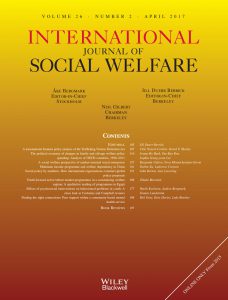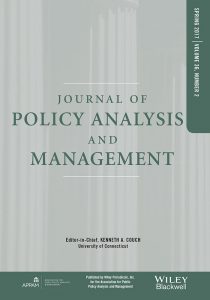At risk of social exclusion: the unemployed over 50s in Europe

In the last twenty years, the labour market participation of older workers in Europe is changing. Demographic transformation, better health and a different social role of older people are leading to a different approach to welfare called active ageing. Extending the labour market participation of older workers and delaying retirement are some of its aims.
An active ageing policy can be successful if the working life extension does not expose older workers to the risk of unemployment. And, whether older workers can find new employment in the event of unemployment.
In an article in Sociology Compass (https://doi.org/10.1111/soc4.13215), I analysed the experience of unemployment of workers over 50s from 2006 to 2019 in eleven European countries (Austria, Belgium, the Czech Republic, Denmark, France, Germany, Greece, Italy, Poland, Spain and Sweden).
The article addressed some particularly important questions. Are the older workers at risk of unemployment? What are the labour market transitions from unemployed status (re-employment, remaining unemployed, or transition to retirement)?
Labour market research usually analyses the trends in indicators such as activity, employment, and unemployment rates. I carried out a longitudinal analysis. I studied the labour market trajectories of a sample of individual older workers and analysed the transition over time between different states or events, such as being employed, being unemployed, and being retired.[1]
The period considered was from the year before the Great Recession (2007-2009) until 2019, before the Covid-19 pandemic (2020-2023).
Since the 1970s and until the early 2000s, especially Continental and South European countries have used early exit as a way of managing the employment consequences of the economic crisis and the restructuring because of the transition from Fordism. Several tools were used to achieve this, including low retirement age, pre-retirement, disability, and unemployment benefits.
Since then, there has been a move towards overcoming early exit. Many European countries have been looking at ways to make their pension systems more sustainable financially. This has involved delaying retirement, introducing multi-pillar pension systems, and lower benefits. The extension of working life in some countries has been further encouraged by less generous unemployment benefits.
The longitudinal analysis confirmed that, as other research has shown, the unemployment risk of older workers was low. There were, however, differences between countries. In Italy and Greece, it was higher. Older workers’ unemployment remained stable in all countries, even in the years following the Great Recession. In contrast to younger employees, job experience and seniority have provided them with some protection.
The social vulnerability of older workers did not seem to be related to the risk of unemployment, but to the fact that unemployment was not transitory. In case of unemployment, there was a risk of being trapped in it. In the analysed sample, the median[2] duration of unemployment was rather long (5 years). The transition rate between states of the unemployed showed that 85% remained unemployed, 13% moved to re-employment, and only 2% went to the status of retired. Countries varied markedly. The extreme cases were Greece and Italy (stay in the status of unemployed is 96% and 98%) and Denmark and Sweden (the probability of transition to working was 57% e 42%).
Where active labour market policies were more developed (Denmark and Sweden versus Greece and Italy), re-employment was more likely. In Southern European countries, measures to support the unemployed were less widespread. These were the countries where older workers had a low level of education. This may have weakened their position in the labour market.
Our sample data showed that it was not easy to move from unemployment to re-employment, even in countries like Denmark and Sweden. While pension and labour policies have pushed individuals to remain in the labour market for longer, there is a need for more policies that support the extension of the working life of older workers. They may include training, employment incentives, job placement services. But also, human resources management. Companies should become more age-inclusive. That means overcoming age discrimination in recruitment, introducing flexible working hours, offering training opportunities to older workers, and so on.
Otherwise, workers bear the social risks associated with unemployment, with less social protection. This may lead to an increase in inequalities among older workers.
As previously stated, data analysed pre-date the Covid-19 pandemic. Two key topics are the impact of the Covid-19 pandemic on the unemployment of older workers, and if the end of job retention schemes in Europe has changed their labour market participation.
[1] Data from SHARE, the Survey of Health, Ageing, and Retirement in Europe, has been used. A sub-sample was extracted from the original data file: those who in 2006 were 50 years old and up, and were employed or unemployed. The individuals have been followed up to the age of 65. Data from the entire employment history were not analysed, but only from the period between 2006 and 2019 (or earlier for those who have reached the age of 65 or who drop out for other reasons.). The data concern a sample of 15,024 individuals.
[2] The median is a central value that separates the lower and higher half of a data set in ascending or descending order.
References
Trentini, M. (2024). Labour market trajectories and unemployment of older workers in Europe after the Great Recession. Sociology Compass, e13215. https://doi.org/10.1111/soc4.13215
Author
Marco Trentini, Department of Education Studies “Giovanni Maria Bertin”, University of Bologna, Italy




1754-9469/asset/society_affiliation_image.gif?v=1&s=9197a1a6ba8c381665ecbf311eae8aca348fe8aa)
1099-0860/asset/NCB_logo.gif?v=1&s=40edfd0d901b2daf894ae7a3b2371eabd628edef)